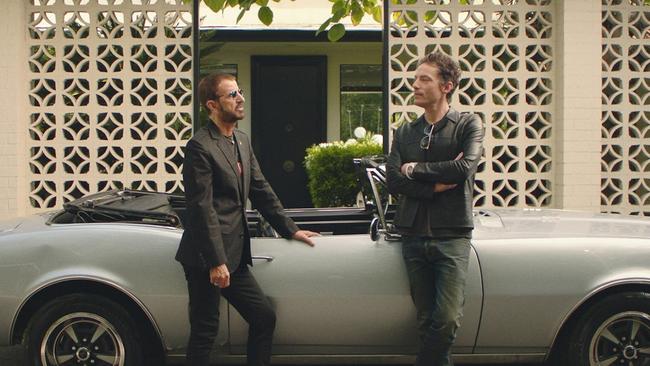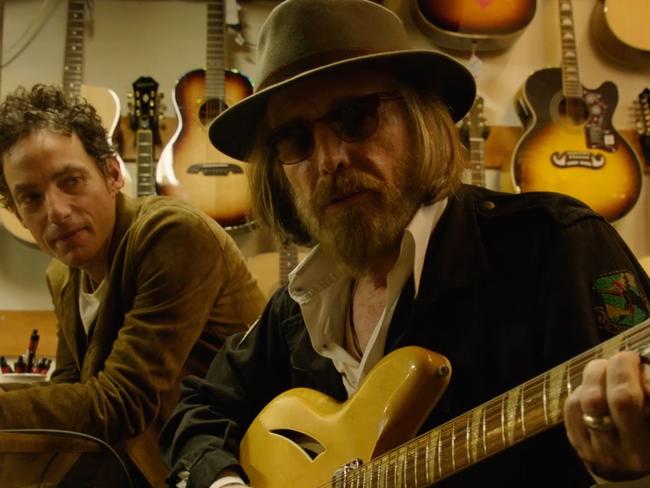Laurel Canyon sound still echoes down the years in Jakob Dylan’s homage
Music documentary Echo in the Canyon explores a creative scene that began in the mid-1960s, drawing bands and musicians to LA’s Laurel Canyon.

Music documentary Echo in the Canyon explores a creative scene that began in the mid-1960s, drawing bands and musicians to Laurel Canyon, the bohemian neighbourhood in the Hollywood Hills that became a location, a symbol, an enduring, potent reference point for 20th-century folk and rock music. Musician Jakob Dylan and director Andrew Slater, who created the film together, set tight temporal boundaries: the focus is on the years from 1965 to 1967, when those who formed bands such as the Byrds, Buffalo Springfield, the Beach Boys and the Mamas and the Papas gravitated to California and started making their mark.
The period gave rise to a special form of collaboration, says Slater. “At that time, it was really the age of innocence … the period that we’re documenting and paying homage to — that notion of sharing ideas and the echo of their ideas.” These bands, all of which had multiple singers and songwriters, “came to California in search of the dream that the Beatles had shown them in A Hard Day’s Night”. It was, he says, “before the idea that you could be rich or you could be a star”.
A 1969 feature from French filmmaker Jacques Demy was the unlikely catalyst for Dylan and Slater’s documentary. Model Shop, Demy’s American debut, follows Gary Lockwood, fresh from his starring role in Stanley Kubrick’s 2001: A Space Odyssey, as he drives around Los Angeles following an enigmatic French woman (Anouk Aimee) from place to place. Slater saw the film at the right moment, he says.
“I think in life sometimes you have to look at where you’ve been to figure out where to go. I had just finished at Capitol (Records), Jakob had just finished a tour and an album, and we were struck by (Demy’s film) because it showed us LA, these places that we go to, but the way it was shot made the city look almost mystical. It inspired us to look at the music of the time, which would have been our first reference point.”
Echo in the Canyon happily celebrates that inspiration, with footage from the movie and match cuts that place Dylan and Lockwood in the same universe.
Model Shop set Dylan and Slater thinking about chains of influence and led Dylan to strike up musical collaborations with contemporary artists he knew in LA such as Fiona Apple, Beck and Regina Spektor. Those partnerships spawned the Echo in the Canyon 2015 tribute concert at the Orpheum Theatre in Los Angeles, also featuring Norah Jones and Cat Power, and an album that gave their name to the documentary, and are part of the film’s fabric.
Dylan and his collaborators perform duets — covers of songs from the era.
We hear Fiona Apple singing the Beach Boys’ In My Room and Jade Castrinos powering through the Mamas and Papas’ Go Where You Wanna Go. It was always interesting, Dylan says, to note the way songs worked when shared between a male and a female voice.
Slater, a music journalist, producer and former chief executive of Capitol Records, took on the director’s role when he was unable to bring a filmmaker on board.

Dylan serves as an interviewer, and in his free-ranging conversations with fellow musicians — Roger McGuinn of the Byrds; David Crosby of the Byrds and Crosby, Stills, Nash and Young; the Beach Boys’ Brian Wilson; Michelle Phillips of the Mamas and the Papas; Ringo Starr — the artists all speak from first-hand experience.
Then there’s Tom Petty, who died in 2017 and who acts as a bridging figure of sorts, an enthusiastic, almost wide-eyed presence, “speaking like a teenager and somebody who was there”, Dylan says, “which is very much the nature of music, rock ’n’ roll specifically; it arrives to you when you’re a teenager. Tom felt that way about this particular kind of music: he played some of their songs, he dressed like them and he played the 12-string.
“He was always very proud to wave that flag. And his enthusiasm had not changed. Once he started talking, we realised we would have been really missing out if we hadn’t had him.”
There have been many Laurel Canyon bands and incarnations of the Laurel Canyon sound since the 60s, Slater says, well aware of what came after. Indeed, another perspective on the story and the sound — Laurel Canyon: A Place in Time, Alison Ellwood’s two-part documentary released this year — has just been nominated for an Emmy. Ellwood’s timeline stretches further than Slater’s; she covers some of the same ground, but with a different emphasis, and she includes figures such as Mitchell, Love, the Doors, the Monkees, Jackson Browne and Linda Ronstadt. There are on-camera interviews with two photographers who chronicled the times and were part of the scene.
Henry Diltz, 81, was a founding member of the Modern Folk Quartet before he discovered a new passion and vocation, taking photographs; Nurit Wilde did lighting before she picked up a camera. Their observations combine distance and intimacy. We see them as they are now.
But with everyone else, Ellwood uses only audio from interviews, archival and recent, playing them over images and footage from the time. So there is a forever-young aspect to the figures, a sense of an eternal present, a world still there in the moment.
Echo in the Canyon is available on digital and on demand on Wednesday. Laurel Canyon: A Place in Time is at DocPlay, www.docplay.com.



To join the conversation, please log in. Don't have an account? Register
Join the conversation, you are commenting as Logout